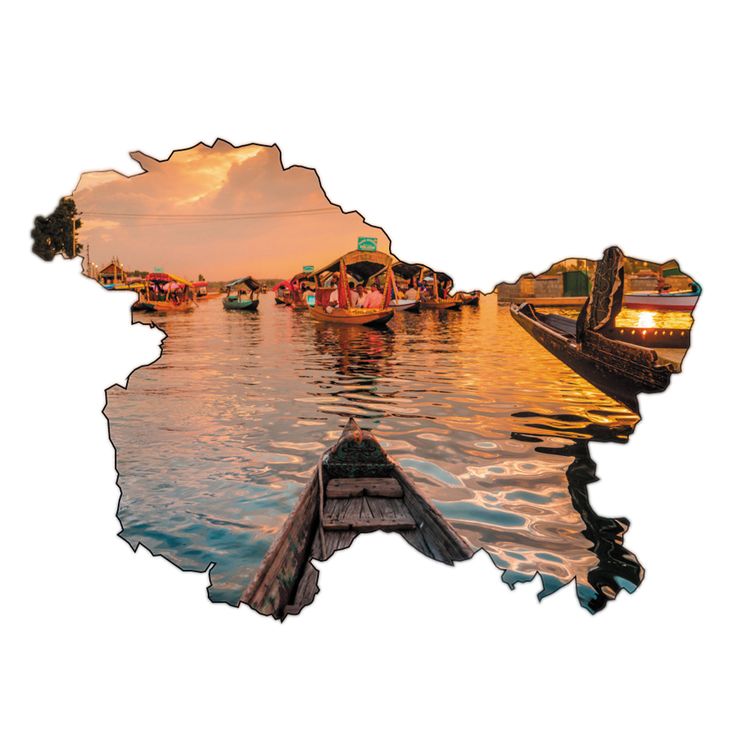Jammu and Kashmir: 10 Powerful Insights Into the Cultural and Historical Significance of the Region
Jammu and Kashmir, often referred to as “Paradise on Earth”, is a region of stunning beauty, deep cultural history, and immense political significance. It lies at the northernmost part of India, bordered by Pakistan and China, and is renowned for its breathtaking landscapes, from the majestic Himalayas to serene lakes like Dal Lake. This article delves into the history, culture, daily life, and societal importance of Jammu and Kashmir, exploring the many facets that make it unique and significant in the broader context of India.
History of Jammu and Kashmir
The history of Jammu and Kashmir is both rich and complex. It has been a cradle of diverse cultures, religions, and political influences for centuries. Initially a part of ancient kingdoms like Mauryas and Kushanas, the region later came under the rule of Hindu Kings, followed by Buddhist influences.
The region’s significance increased during the Mughal era, where it was known for its lush gardens and as a summer retreat for the Mughal emperors. The Mughal Emperor Jahangir famously described Jammu and Kashmir as “a paradise on earth” for its unparalleled natural beauty.
In the 19th century, the region became a princely state under Dogra rule and later merged with India in 1947 after independence. Since then, Jammu and Kashmir has been at the center of geopolitical discussions, especially due to territorial disputes between India and Pakistan. The region has faced various political and social challenges, making it a focal point of national discourse.
Daily Life in Jammu and Kashmir
The daily life in Jammu and Kashmir is shaped by its rugged terrain, climatic variations, and cultural richness. Life in the plains of Jammu is quite different from that in the Kashmir Valley, where the colder climate, especially in winter, shapes the lifestyle of the people.
In Srinagar, the summer capital, daily life revolves around the famous houseboats, traditional Shikaras on Dal Lake, and the bustling local markets. Kashmiri shawls, carpets, and handicrafts are a significant part of daily commerce. The Kashmiri people are known for their hospitality, and their cuisine is a unique blend of flavors, including famous dishes like Rogan Josh, Gushtaba, and Yakhni.
In contrast, life in Jammu tends to be warmer and more influenced by the Hindu culture, with the Vaishno Devi Shrine being a major religious site that attracts millions of pilgrims every year. The daily routine for many people here revolves around agriculture, local markets, and community gatherings.
Impact on Society
Jammu and Kashmir holds a profound place in the collective consciousness of India. The region is not only famous for its cultural diversity but also for its role in shaping modern Indian society. The Kashmiri Pandit community, with its rich literary and religious traditions, has made significant contributions to India’s intellectual and spiritual legacy.
The Jammu region, on the other hand, has been a hub for religious harmony, with a large population of Hindus, Sikhs, and Muslims living together in relative peace. Jammu’s role in pilgrimages—especially the Vaishno Devi Temple—makes it an important part of the religious and cultural fabric of India.
The region has faced significant challenges, especially in terms of political unrest and security concerns, which have had a direct impact on the local population. However, the resilience and unity of the people of Jammu and Kashmir have been instrumental in preserving the region’s identity and rich culture.
Key Facts
- Geography: Jammu and Kashmir is home to some of the most stunning landscapes in the world, including Kashmir Valley, Jammu Hills, and the Ladakh region.
- Cultural Diversity: The region is known for its cultural and religious diversity, with a mix of Hindu, Muslim, Buddhist, and Sikh communities.
- Historical Significance: Jammu and Kashmir has been a vital center for Buddhism, Hinduism, and Islam, with ancient temples, monasteries, and mosques dotting the landscape.
- Tourist Attraction: Famous for its natural beauty, Jammu and Kashmir is a major tourist destination, with people flocking to places like Gulmarg, Pahalgam, and Leh-Ladakh.
- Famous Cuisine: The region is renowned for its culinary delights, including traditional Kashmiri Wazwan and Pahari food.
- Vaishno Devi Shrine: One of the most visited pilgrimage sites in the world, attracting millions of devotees annually.
- Craftsmanship: The state is famous for its traditional handicrafts like Kashmiri carpets, Pashmina shawls, and paper-mâché items.
- Cold Winters: Winters in the region can be extremely harsh, especially in Kashmir Valley, where the famous Chillai Kalan season brings heavy snowfall.
- Political Significance: The region remains a crucial point in the ongoing territorial dispute between India and Pakistan.
The Significance to India
Jammu and Kashmir holds significant strategic, cultural, and religious importance to India. The region is vital for its security as it shares borders with both Pakistan and China. From a cultural perspective, the region’s pluralism serves as a reminder of India’s unity in diversity. Jammu and Kashmir is also essential for India’s water security, with the region being the source of major rivers such as the Jhelum, Chenab, and Ravi.
Moreover, the region has long been symbolic of India’s secularism and democratic values. Despite challenges, the people of Jammu and Kashmir have consistently worked toward maintaining peace and harmony in the face of adversity. The state has made significant strides in development and the preservation of its cultural heritage, despite political turmoil.
Observance and Wishing
It celebrates several important festivals, such as Diwali, Eid, and Baisakhi, as well as local festivals like Navratri and Makar Sankranti. People often extend their warm wishes on these occasions, emphasizing the region’s diverse and vibrant traditions. One of the key observances in Jammu and Kashmir is the Mughal Gardens Festival, which highlights the region’s historical importance and its enduring beauty.
The Tulip Festival in Srinagar is another significant event that attracts visitors from across the world to admire the blooming tulip gardens in the spring season.
FAQs About Jammu and Kashmir
- What makes Jammu and Kashmir a unique region? It is unique for its breathtaking natural beauty, cultural diversity, and historical significance. It has been a center for Hindu, Buddhist, and Muslim civilizations for centuries.
- What are the main tourist attractions in Jammu and Kashmir? Some of the most popular tourist attractions include Gulmarg, Sonmarg, Leh-Ladakh, Vaishno Devi Temple, and Srinagar’s Dal Lake.
- Why is Jammu and Kashmir politically significant? It holds strategic importance due to its location between India, Pakistan, and China, and it remains central to India’s territorial and security concerns.
- What are the traditional dishes of Jammu and Kashmir? Some of the traditional dishes include Rogan Josh, Gushtaba, Yakhni, and Kashmiri Kahwa.
- What is the weather like in Jammu and Kashmir? The experiences a wide range of climates, from the chilly winters in the Kashmir Valley to the more temperate climate in Jammu. The region also experiences harsh winters, especially during the Chillai Kalan period.
Conclusion
It’s significance goes beyond its natural beauty. It is a region steeped in history, culture, and tradition, with a strategic role in India’s security and development. While the region has faced its share of challenges, the resilience of its people and its cultural diversity continue to be its strongest assets. As India moves forward, Jammu and Kashmir will remain an integral part of the nation’s identity, influencing everything from politics to tourism, and serving as a symbol of India’s rich heritage and enduring spirit.










